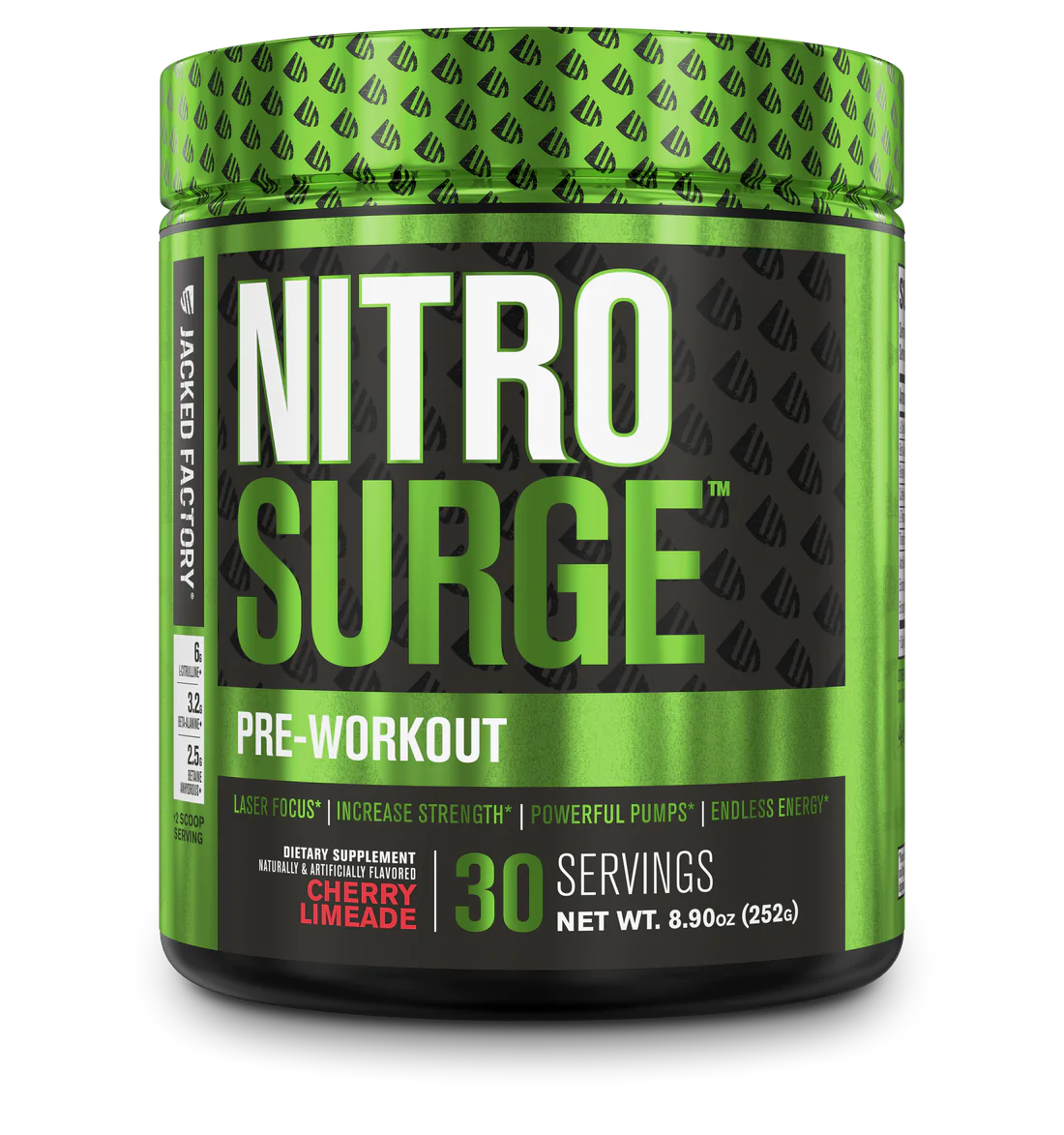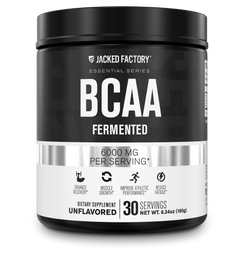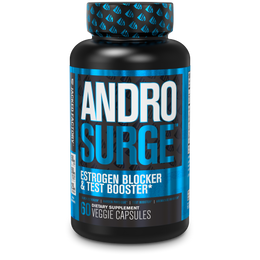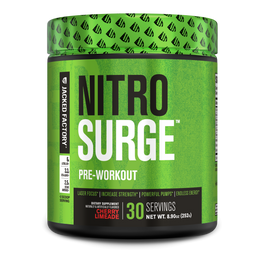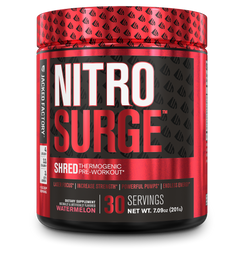There are three primary nutrient groups (or macronutrients) that affect our body composition, metabolism, and energy. Many people simply refer to these nutrients as macros. The three main macros in humans are:
- Protein (1 g of protein provides 4 calories)
- Fat (1 g of fat provides 9 calories)
- Carbohydrates (1 g of carbohydrates provides 4 calories)
Alcohol also provides 7 calories per gram. However, it is not considered a macronutrient because it is not essential for survival. Water is also considered a macronutrient, but it doesn’t contain energy or calories.
We can find all the macros in the food and drink that we consume. Learning what these three groups are and how they function is crucial for monitoring your diet and getting into shape, even if you don’t track your macros daily.
What is Protein?
The protein that you consume in foods is broken down by your body into individual amino acids, the building blocks of protein. Your body uses these amino acids to build and repair various tissues like skin, muscle, bones, cartilage, and cellular structures.

Amino acids also make enzymes, hormones, and other biochemicals, and are crucial for liver health and detoxification. Without sufficient amino acid pools, your body will break itself down; essentially, you would cease to exist without ingesting protein.
Protein source examples include:
-
Animal Meats
- Beef
- Chicken
- Pork
-
Dairy Products
- Milk
- Yogurt
- Cottage Cheese
-
Protein Powder
- Whey
- Casein
- Soy
The Role of Fat in the Body
Fat is an essential part of our diet and nutrition we cannot live without. Our bodies require small amounts of ‘good fat’ to function and help prevent disease. Fat is also used as a source of energy and is more calorie dense than protein and carbohydrates. It helps to protect our organs, maintain cellular integrity, absorb nutrients, and is also important for brain health. Every cell in our body is made from fat.

Fat source examples include:
-
Oils
- Olive Oil
- Sunflower Oil
- Palm Oil
-
Nuts and Nut Butters
- Peanuts
- Almonds
- Cashews
- Cheese
What Are Carbohydrates?
Carbohydrates are sugars that break down in the body to create glucose. It is not essential for human life as the body can create glucose from protein and fat. However, it is the quickest way for the body to create energy through a process called glycolysis. When consumed they release insulin, which is an anabolic storage hormone. This hormone lowers blood sugar levels by moving glucose from the blood into cells.
Carbohydrates are generally classified into two types:
- Simple Carbohydrates: boosts insulin and blood sugar levels faster
- Complex Carbohydrates: slower digesting and blood sugar levels rise slower

Carbohydrate source examples include:
-
Grains
- Rice
- Oats
- Wheat
-
Fruits
- Berries
- Apples
- Oranges
- Certain Vegetables
- Carrots
- Potatoes
What Is Insulin and Why Is it Important?
As mentioned before, insulin is a storage hormone that is released by your pancreas and enhances your body’s use of sugar from carbohydrates as either energy or for storage. Keeping it simple, insulin helps shuttle sugar into cells, muscle, or fat tissue from the blood; it is vital to balance blood sugar levels.
Why is this important? Because years of eating refined sugar and low-quality carbohydrate sources, like candy and soda, can make your cells resistant to insulin, which in turn throws your blood sugar levels out of whack. So when your insulin is spiked, the sugar needs to go somewhere, and if you are resistant to insulin, it is much more likely to be stored in fat cells and converted to extra fatty tissue.
However, when you weight train, you make your muscles and cells more sensitive to glucose. This can help fight the resistance and make your body utilize blood sugar more effectively. This is why some very active people can get away with eating more carbohydrates and higher sugar foods. Insulin is also a very anabolic hormone, so if you’re active and lift weights regularly, it can work in your favor to build muscle and get lean.
“I’ve been doing everything right, and the scale hasn’t moved in a week! What’s going on?”

Before you start freaking out about a weight-loss plateau, you need to know that fat loss and body adaptations are NOT linear. It’s not a constant slide downhill, it comes in spurts. Fat loss and muscle growth also happen at night when you sleep. So make sure you are getting good quality sleep to recover. But don’t get down on yourself if you don’t see the scale drop every day. Trust the process, and the body will adapt.
Nutrition
This section will focus on setting the foundations of your diet. You will learn about portion control, macronutrient ratios, and how to prime your body for optimal fat loss and performance. Remember, eating healthy without tracking your food intake methodically won’t be easy at first, but it will be the most rewarding when you successfully master it. When your body starts adapting, and you start seeing results, you will feel more energetic, confident, and really start to believe in the process.
Portion control
To get you into the habit of correct portion sizing and balance, we will use your own hands for portion sizes. This is a more convenient approach to dieting as you don’t have to carry scales around with you and worry about grams, plus you take your hands everywhere with you!
Over time you will start to recognize suitable portion sizes without even the need to compare it to your hands. It will become habitual, and you will know what a well-balanced meal looks like. This approach is also more viable in the long-term as a lifestyle.

- Protein: Palm sizing
- Vegetables: Fist sizing
- Carbohydrates: Cupped hand sizing
- Fats: Thumb sizing
Principles of Dieting Without Tracking Macros
Below is an example of traditional maintenance diet for someone around 180 lbs. We’ve split the diet into breakfast, lunch, and dinner, and given you a list of foods to meet your macros.
Breakfast
- Blended shake containing 1 scoop of protein powder (30g) or 300ml of Pure egg whites
- 1 thumb of a fat source
- 2 fists of mixed vegetables
- 2 fists of carbohydrates
Lunch
- 2 palms of a protein source
- 2 fists of mixed vegetables
- 1 thumb of a fat source
- 1 fist of carbohydrates
Dinner
- 2 palms of a protein source
- 1 fist of mixed vegetables
- 2 thumbs of a fat source
- 1 fist or more of salad
- 1 tablespoon of apple cider vinegar dressing on the salad
Free snacks
- Vegetables
Water intake
- 2-3L per day (filtered, avoid tap water)
Protein sources
- Chicken
- Beef
- Turkey
- Pork
- Eggs
- Salmon
- Tuna
- Protein Powder
- Cottage Cheese
Grill all meats, and use either lemon or salt-free spices for flavoring. Be wary of cooking oils and their fat content. You can use cooking spray or coconut oil if needed.
Carbohydrate sources
- Fibrous Vegetables
- Complex Grains
- Rice
- Oats
- Quinoa
Fat sources
- Olive Oil
- Macadamia Oil
- Coconut Oil
- Feta Cheese
- Avocado
- Yogurt
- Nuts and Nut Butters
Ultimately, you need to listen to your body. If your goal is to maintain or even gain muscle, then you should eat more when you’re hungry. If you’re trying to cut fat, then eat more vegetables.
All in all, eating without tracking macros is pretty easy once you clean up your act, incorporate more whole foods, and give your body a chance to adapt. You might lose weight rapidly in the initial stages and notice a few changes in energy and mood throughout the day, but give it time.
Meats and fat
Be aware that some meats will also contain fat. Good examples are lamb and salmon, which both contain high amounts of fat, whereas a piece of lean chicken is mainly just protein and contains very little fat. This is especially important to remember when eating meat while having a fat source on the side. If having a piece of salmon, the smarter option would be to cut out the thumb-sized fat portion and just favor salmon and vegetables.
Vegetables
It is borderline impossible to overeat vegetables, and they are packed full of micronutrients. Eat as many as you like throughout the day. They are very light on calories, and the benefits are endless. We will call these “free” foods because even if you are tracking calorie and macronutrient intake, you can still eat as many as you like with minimal drawback and plenty of positives.

Don’t forget some fruit
Fruits are packed full of fiber and vitamins, but they also contain a modest amount of sugar. They are ideal for breakfast and after working out, especially if you like to make a smoothie with protein powder after hitting the gym. In general, berries are the highest in fiber and micronutrients.
Timing of meals
Try and eat your first meal closer to waking up. If you are getting hungry throughout the day, look at your portion sizing and assess your food choices. You should feel hungry roughly three to four hours after a meal; if you are getting hungrier before, then you may not be eating enough. If you are full after three to four hours, then your portions may be too big. Also, use green veggies to your advantage as they contain minimal calories and can be very filling.
Selection of fat sources
Fat is more calorie dense than protein and carbohydrates. For every gram of fat, you get nine calories, whereas every gram of protein and carbohydrates contains four calories. This is why you should usually consume lesser quantities of fat compared to the other macronutrients. Every cell in the body, however, is made of fat, and it is essential to eat a variety of healthy fats in your diet. Aim to eat more unsaturated fats, which are found in things like nuts and avocado, and less saturated fats in your diet.
Make sure you eat enough fiber
Eating enough fiber will keep your colon and gut healthy, and will give you many health benefits ranging from lowering cholesterol to regulating blood sugar. It’s also a key component in feeling full and content with your food. Good sources of fiber are vegetables, fruit, and grains. You can also supplement with brands such as Metamucil and Benefiber.
What sauces, herbs, and spices can I use?
Use any herbs and spices you desire. I personally recommend pink Himalayan sea salt instead of regular salt for your foods. The health benefits are endless since it’s so rich in micronutrients. Try and minimize the use of condiments high in sugar, like traditional ketchup. Feel free to use as much mustard and Tabasco sauce as you like, though, since they are pretty much calorie-free. Just be wary of nutritional labels and check the macros before covering your food in anything.
Drink tea and coffee!
Feel free to drink as much tea and coffee as you desire. Just try to avoid adding sugar and dairy. Tea and coffee can be great for increasing your metabolism and mobilizing fat!
Eating out and weekly re-feed guidelines
As we know, eating out can get in the way of health and fitness goals. But don’t let that stop you from having a life. Be flexible and enjoy life while being fit and healthy. It just takes some planning, preparation, and flexibility on your behalf to enjoy both.
- Be prepared and know when you are going out
If you know you are going out to dinner or to a BBQ, then adjust your diet throughout the day. Perhaps cut your fats out of all your previous meals in preparation for fatty sausages or chips later at night. Or earn your nights out by planning your hardest training session of the week in the morning. It’s been proven that your body uses nutrients better after you have trained.
- Make sensible food choices when out
Sometimes a night out will be unplanned and you’ll be dragged to a friends house to socialize. Don’t suffer and not eat for your fitness goals. Just make sensible decisions.
Handy tips for eating out without counting macros
- Try and drink as much water before you get there. It adds volume to your stomach and fills you up, making you less likely to indulge in food.
- Choose meats and vegetables first before eating a carb source like pasta or rice in order to fill yourself up.
- Eat slowly, since it takes time for your body to register what you have eaten and the feeling of fullness to develop. Be mindful of your eating habits: chew more, eat slower, and allow food to digest properly.
- Eat until you feel about 80% full.
- Don’t feel guilty when you eat off of the “plan”!
Life happens. You aren’t a professional athlete forced to follow strict rules. Even top-level athletes struggle with their own battles of health and fitness. Don’t let the illusion of discipline stop you. Strong habits, consistency, and persistence is the key. One bad meal won’t set you back, just like one healthy meal won’t turn you into a fitness model. Enjoy the journey as well as the destination!

